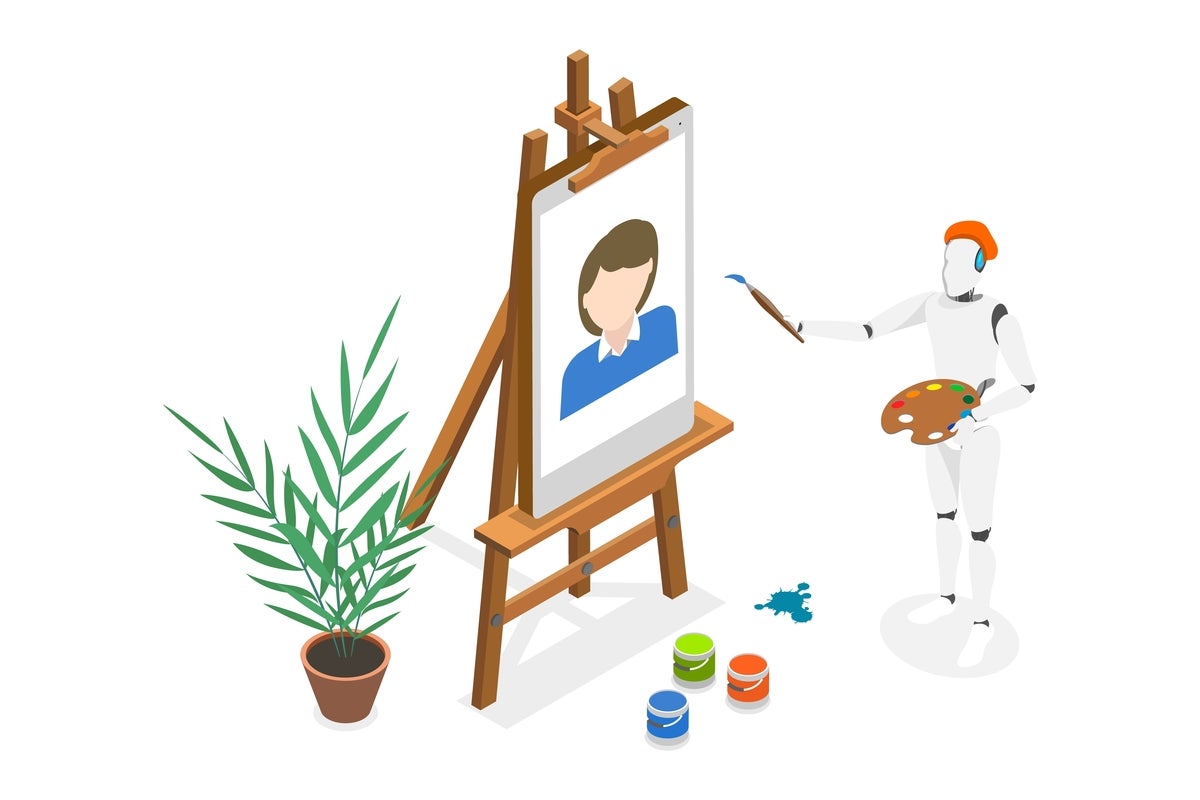Do programming certifications still matter?

Hiring is one area where programming certifications definitely play a
role. “One of the key benefits of having programming certifications is that
they provide validation of a candidate's skills and knowledge in a particular
programming language, framework, or technology,” says Aleksa Krstic, CTO at
Localizely, a provider of a cloud-based translation platform. “Certifications
can demonstrate that the individual has met certain standards and has the
expertise required to perform a specific job.” For employers, programming
certifications offer several advantages, Krstic says. “They can help streamline
the hiring process, by providing a benchmark for assessing candidates' skills
and knowledge,” he says. “Certifications can also serve as a way to filter out
applicants who do not meet the minimum requirements.” In cases where
multiple candidates are equally qualified, having a relevant certification can
give one candidate an edge over others, Krstic says. “When it comes to
certifications in general, when we see a junior to mid-level developer armed
with programming certifications, it's a big green light for our hiring team,”
says Michał Kierul is the CEO of software company SoftBlue
Overseeing generative AI: New software leadership roles emerge

In addition to line-of-business expertise, the rise of AI will mean there is
also a growing focus on prompt engineering and in-context learning capabilities.
Databricks' Zutshi says, "This is a newer ability for developers to optimize
prompts for large language models and build new capabilities for customers,
further expanding the reach and capability of AI tools." Yet another area where
software leaders will need to take the lead is AI ethics. Software engineering
leaders "must work with, or form, an AI ethics committee to create policy
guidelines that help teams responsibly use generative AI tools for design and
development," Gartner's Khandabattu reports in her analysis. Software leaders
will need to identify and help "to mitigate the ethical risks of any generative
AI products that are developed in-house or purchased from third-party vendors."
Finally, recruiting, developing, and managing talent will also get a boost from
generative AI, Khandabattu adds. Generative AI applications can speed up hiring
tasks, such as performing a job analysis and transcribing interview summaries.
Generative Agile Leadership: What The Fourth Industrial Revolution Needs

Expanding the metaphor of the head, heart and hands, I've developed eight
generative agile leadership (GAL) principles; they are the structure needed to
create resilient teams of happy, contributing people who amplify satisfied
customers and deliver outcomes for a thriving business. ... The GAL principles
come from Peter Senge's learning organization and Ron Westrum’s organizational
cultures. The learning organization is an adaptive entity that expands the
capabilities of people and the whole system. The generative model is a
performance-oriented organizational culture to ensure that people have high
trust and low blame to increase the ability to express new ideas. ... The
great-person leadership style that emphasizes that leaders are made and not
born will not age well in the 4IR. The human-centered generative leadership
model is the best approach to leading the four generations. The GAL principles
are rooted in the idea that leaders should help their employees grow and
develop as individuals. Generative leaders focus on creating a learning
environment and providing their employees with opportunities to reach their
full potential.
IT Must Clean Up Its Own Supply Chain

At the end of our supply chain “clean up” exercise, we were pleased that we
had gained a good handle on our vendor services and products. This would
enable us to operate more efficiently. We were also determined to never fall
into this supply chain quagmire again! To avoid that, we created a set of
ongoing supply chain management practices designed to maintain our supply
chain on a regular basis. We met regularly with vendors, designed a “no
exceptions” contract review as part of every RFP process, and no longer
settled for boilerplate vendor contracts that didn’t have expressly stated
SLAs. We also made it a point to attend key vendor conferences and to actively
participate in vendor client forums, because we believed it would give us an
opportunity to influence vendor product and service directions so they could
better align with our own. End to end, this exercise consumed time, and
resources, but it succeeded in capturing our attention. Attention to IT supply
chains is even more relevant today as IT increasingly gets outsourced to the
cloud
‘Data poisoning’ anti-AI theft tools emerge — but are they ethical?

Hancock said genAI development companies are waiting to see how aggressive “or
not” government regulators will be with IP protections. “I suspect, as is
often the case, we’ll look to Europe to lead here. They’re often a little more
comfortable protecting data privacy than the US is, and then we end up
following suit,” Hancock said. To date, government efforts to address IP
protection against genAI models are at best uneven, according to Litan. “The
EU AI Act proposes a rule that AI model producers and developers must disclose
copyright materials used to train their models. Japan says AI generated art
does not violate copyright laws,” Litan said. “US federal laws on copyright
are still non-existent, but there are discussions between government officials
and industry leaders around using or mandating content provenance standards.”
Companies that develop genAI are more often turning away from indiscriminate
scraping of online content and instead purchasing content to ensure they don’t
run afoul of IP statutes. That way, they can offer customers purchasing their
AI services reassurance they won’t be sued by content creators.
SEC sues SolarWinds and its CISO for fraudulent cybersecurity disclosures

The SolarWinds case could act as a pivotal point for the role of a CISO,
transforming it into one that requires a lot more scrutiny and responsibility.
"SolarWinds incident highlights the responsibility of CISOs of publicly listed
companies in not only managing the cyberattacks but also proactively informing
customers and investors about their cybersecurity readiness and controls,"
said Pareekh Jain, chief analyst at Pareekh Consulting. "This lawsuit
highlights that there were red flags earlier that the CISO failed to disclose.
This will make corporations and CISOs take notice and take proactive security
disclosure more seriously similar to how CFOs take financial information
disclosure seriously." "There are many unknowns here; we don’t know if the
CISO 'succumbed' to pressure from other leaders or if he was complicit in the
hack," said Agnidipta Sarkar, vice president for CISO Advisory at ColorTokens
Inc. "In either case, he is the target. But the reality is that the CISO is a
very complex role. We are constantly required to navigate internal politics
and pushbacks, and unless you are on your toes, you will be at the mercy of
external forces at a scale no other CXO is exposed to."
Why adaptability is the new digital transformation

Sustainability and resilience are mature management disciplines because a lot
of attention has been paid to developing strategies and implementing solutions
to address them. When it comes to adaptability, however, apart from agile
methodologies and adaptation as it relates to climate change, there’s very
little to learn from in terms of the body of work, which is why I addressed
this issue in “A Guide to Adaptive Government: Preparing for Disruption.”
Adaptive systems and resilient systems are often confused and thought of as
interchangeable, but there’s a vast difference between the two concepts.
Whereas an adaptive system restructures or reconfigures itself to best operate
in and optimize for the ambient conditions, a resilient system often simply
has to restore or maintain an existing steady state. In addition, whereas
resilience is a risk management strategy, adaptability is both a risk
management and an innovation strategy. The philosophy behind adaptive systems
is more about innovation than risk management. It assumes from the start, that
there are no steady state conditions to operate within, but that the external
environment is constantly changing.
Bringing Harmony to Chaos: A Dive into Standardization

Companies with different engineering teams working on various products often
emphasize the importance of standardization. This process helps align large
teams, promoting effective collaboration despite their diverse focuses. By
ensuring consistency in non-functional aspects, such as security, cost,
compliance and observability, teams can interact smoothly and operate in
harmony, even with differing priorities. Standardizing these non-functional
elements is key for maintaining system strength and resilience. It helps in
setting consistent guidelines and practices across the company,
minimizing conflicts. The aim is to seamlessly integrate standardization
within these elements to improve adaptability and consistency. However,
achieving this standardization isn’t easy. Differences in operational methods
can lead to inconsistencies. ... The aim of standardization is to create
smooth and uniform processes. However, achieving this isn’t always easy.
Challenges arise from different team goals, changing technology and the
tendency to unnecessarily create something new.
When tightly managing costs, smart founders will be rigorous, not ruthless

Instead of ruthless, indiscriminate cost-cutting, it is wise to be very frugal
about what doesn’t matter while you continue maintaining or even moderately
investing in the things that do matter. When making cuts, never lose sight of
your people. They’re anxious about the future, and you can’t expect to add
more stress and excessive demands to already-stressed workers. ... The
outright elimination of things like team lunches, in-person meetings and
little daily perks creates instant animosity. Thoughtful cuts instead create
visible and tangible reminders of the current environment, especially when
considering how important in-person gatherings are to sustaining a robust
culture in a remote work environment. Instead of quarterly in-person employee
meetups, move to annual and replace the others with a DoorDash gift card and a
video meeting. Curtailing all travel — both sales calls and team meetups — not
only hurts morale, it allows justifiable excuses for missed targets, lost
deals and churned customers.
A Beginner's Guide to Retrieval Augmented Generation (RAG)
Retrieval Augmented Generation is a method that combines the powers of large
pre-trained language models (like the one you're interacting with) with
external retrieval or search mechanisms. The idea is to enhance the capability
of a generative model by allowing it to pull information from a vast corpus of
documents during the generation process. ... RAG has a range of potential
applications, and one real-life use case is in the domain of chat
applications. RAG enhances chatbot capabilities by integrating real-time data.
Consider a sports league chatbot. Traditional LLMs can answer historical
questions but struggle with recent events, like last night's game details. RAG
allows the chatbot to access up-to-date databases, news feeds and player bios.
This means users receive timely, accurate responses about recent games or
player injuries. For instance, Cohere's chatbot provides real-time details
about Canary Islands vacation rentals — from beach accessibility to nearby
volleyball courts. Essentially, RAG bridges the gap between static LLM
knowledge and dynamic, current information.
Quote for the day:
“Vulnerability is the birthplace of
innovation, creativity, and change.” -- Brené Brown
No comments:
Post a Comment